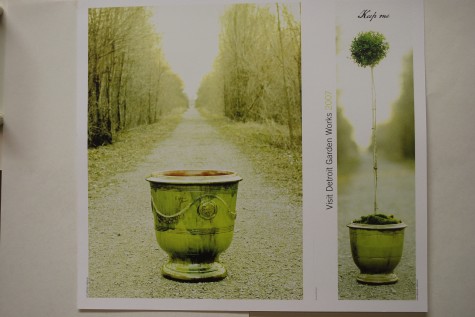
Though my post several days ago on glazed French terra cotta was intended as an introduction to a discussion of color in the landscape, Delphine, author of that fine French landscape and garden blog Paradis Express (www.paradisexpress.blogspot.com) published some of my photographs. She was clearly pleased than an American landscape designer knew, placed and planted French garden pots. The piece pictured above, featuring two pots from Les Enfant de Boisset, ran as an insert in the New York Times Sunday paper just before Mother’s Day in 2007.
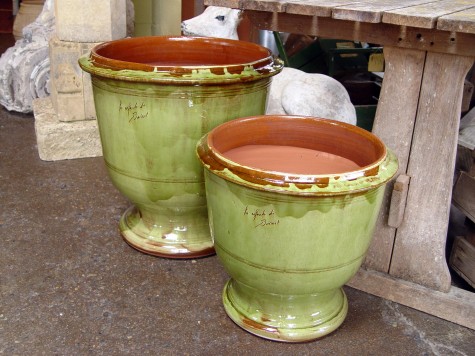 I have been importing garden pots handmade at a number of French potteries since 1992-I am as crazy about them today as I was 18 years ago. My very first purchase-a pallet of gorgeous cream colored clay pots from the Poterie Provencale in Biot. I am convinced a mutual love of beautiful objects for the garden overcame our language difficulties; I was so thrilled to get those pots. Les Enfant de Boisset does not produce an olive green pot. It was entirely Rob’s asking and their willingness to make a collection especially for us in this great color.
I have been importing garden pots handmade at a number of French potteries since 1992-I am as crazy about them today as I was 18 years ago. My very first purchase-a pallet of gorgeous cream colored clay pots from the Poterie Provencale in Biot. I am convinced a mutual love of beautiful objects for the garden overcame our language difficulties; I was so thrilled to get those pots. Les Enfant de Boisset does not produce an olive green pot. It was entirely Rob’s asking and their willingness to make a collection especially for us in this great color.
 Planted up, these pots make for an entire landscape in a very small space. French garden pots are made today in much the same way, and with many of the same designs that have existed for centuries. They clearly show evidence of the human hand, and speak to their long history of landscape and garden. Some French poteries have added more modern designs, to round out their collections.
Planted up, these pots make for an entire landscape in a very small space. French garden pots are made today in much the same way, and with many of the same designs that have existed for centuries. They clearly show evidence of the human hand, and speak to their long history of landscape and garden. Some French poteries have added more modern designs, to round out their collections.
 This yellow/brown glazed pot came from the Poterie De Cliousclat, a French pottery whose beginnings date back to the 16th century. Rob once brought me a small book detailing the history of the pots; the pages of the book had absorbed the smell of the clay from the dirt floors of the pottery. Though Cliousclat is no longer, I will never forget their pots, or the smell of the poterie inseparable from that book.
This yellow/brown glazed pot came from the Poterie De Cliousclat, a French pottery whose beginnings date back to the 16th century. Rob once brought me a small book detailing the history of the pots; the pages of the book had absorbed the smell of the clay from the dirt floors of the pottery. Though Cliousclat is no longer, I will never forget their pots, or the smell of the poterie inseparable from that book.
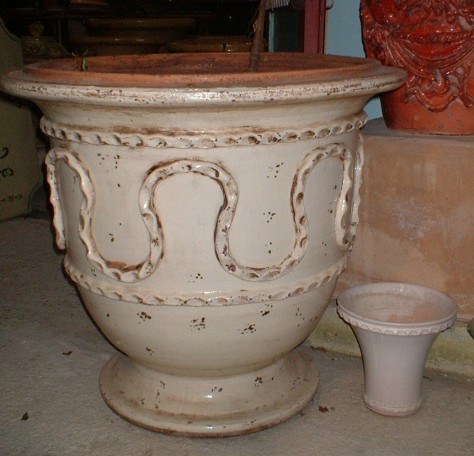
This white glazed pot is from the Poterie St. Jean de Fos, and is shown in the guarland pattern. This particular pattern features a rope garland.
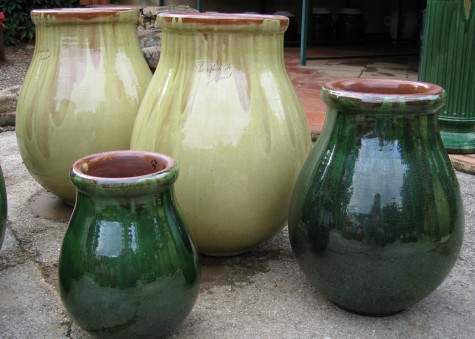
The classic jarre from the Poterie Les Enfant de Boisset

Classic jarre, planted
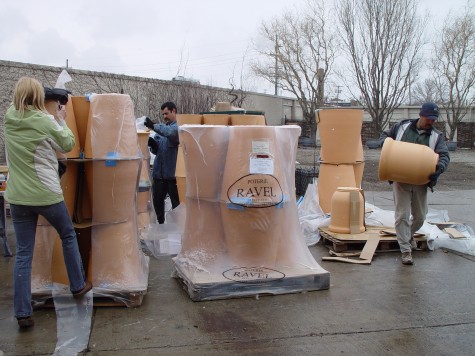 Arrival of a shipment of pots from the Poterie Ravel
Arrival of a shipment of pots from the Poterie Ravel
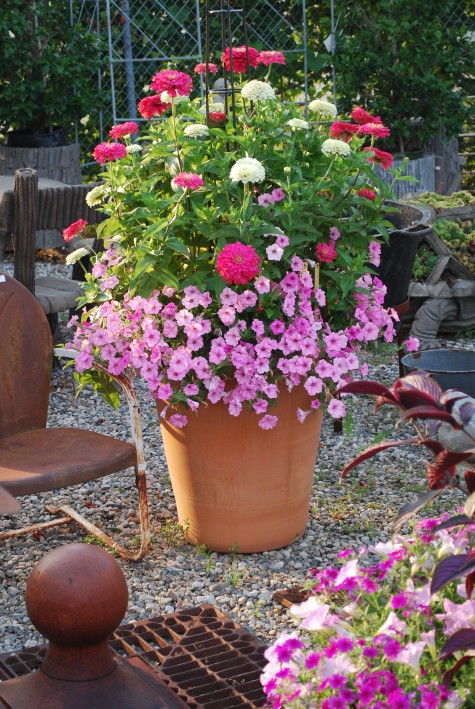 Large Ravel pot, planted
Large Ravel pot, planted
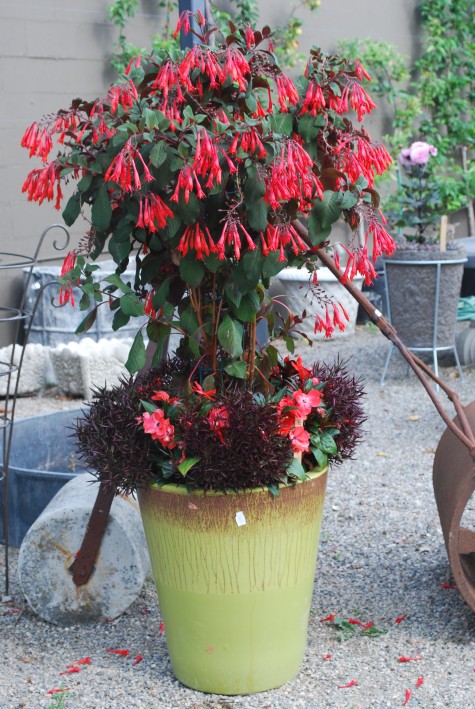
Ravel clay pot, painted and planted

Ravel “Violetta” pots
 Planted Violetta pots
Planted Violetta pots

petit pots lisse from the Poterie Goicoechea, located in the Basque country of France

Planted pots from Goicoechea
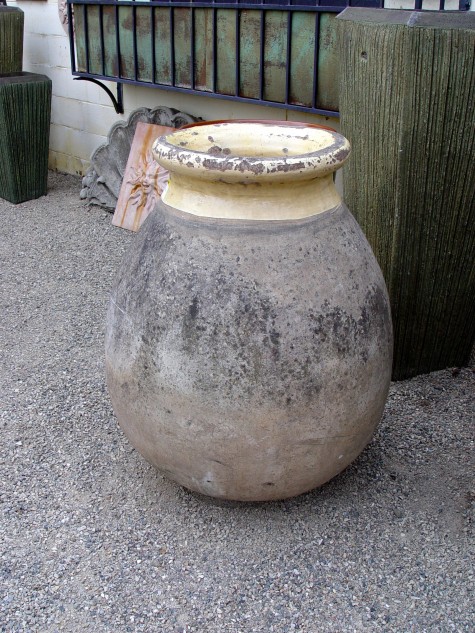
Jarre de Biot, from the Poterie Provencale, circa 1920
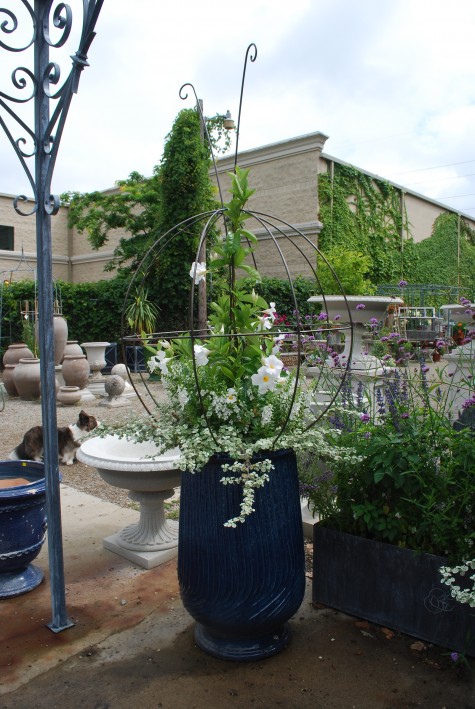 blue strie huile, from the Poterie de la Madeleine, in Anduze, planted
blue strie huile, from the Poterie de la Madeleine, in Anduze, planted
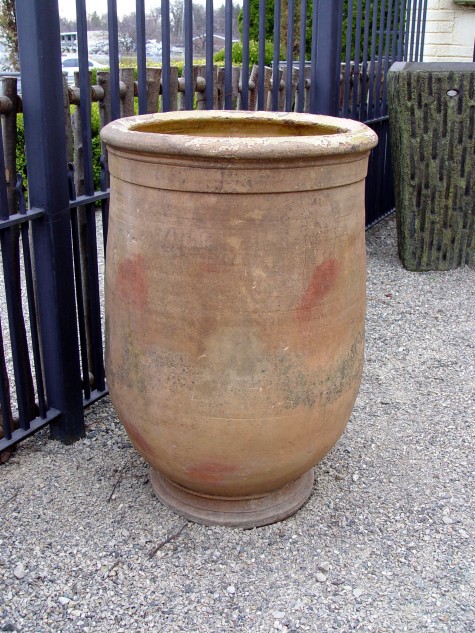 French huile, circa 1920
French huile, circa 1920
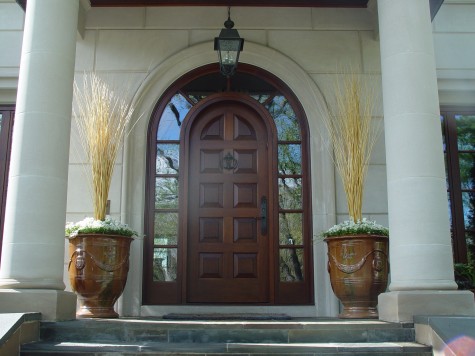 Classic Anduze pot, Poterie de la Madeleine, in the flamme finish
Classic Anduze pot, Poterie de la Madeleine, in the flamme finish
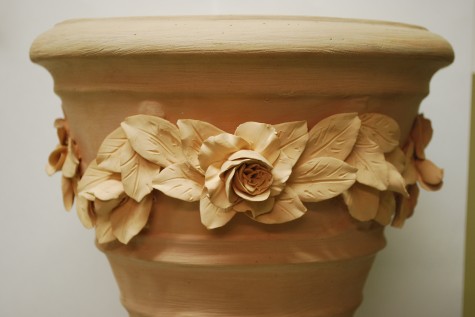
terra cotta jardiniere from Espace Buffon, Paris
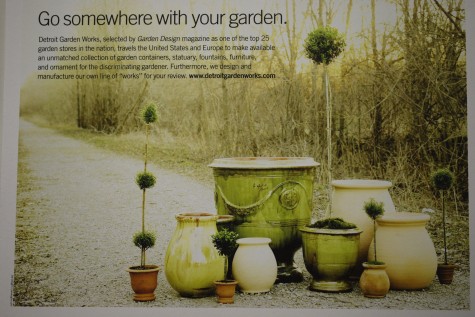
I greatly admire the French garden pots. Though not pictured, we have bought many beautiful pots and ceramic garden pieces from the Poterie Provencale in Biot, Poterie du Mesnil de Bavant, Poterie Sampigny, salt glazed pots from Noron, gorgeous pots by Claudine Essautier at Raison de Plus, Jane Norbury-our list is long. I am sure there are others I do not know-yet. I hope each and every one of them goes on making beautiful things for the garden, for all the gardeners everywhere who so appreciate them.
 I reluctantly agreed to play ball with those dogs of mine yesterday-in spite of the 9 degree temperature. We were not outside for long, but long enough for me to see the color of my yews had gone so dark they almost looked black. This cold color could not be further from how those yews look dressed in their spring green foliage. This set me to thinking about color as a design element. The glazed terra cotta pots manufactured in France for hundreds of years make a big color statement. Their strong color has a very Mediterranean feeling to me; the color seems very much a product of the climate in which they are made. When I see a pink stucco house, I immediately think warm climate; no doubt I react to color with an entire set of pre-conceived notions hovering nearby.
I reluctantly agreed to play ball with those dogs of mine yesterday-in spite of the 9 degree temperature. We were not outside for long, but long enough for me to see the color of my yews had gone so dark they almost looked black. This cold color could not be further from how those yews look dressed in their spring green foliage. This set me to thinking about color as a design element. The glazed terra cotta pots manufactured in France for hundreds of years make a big color statement. Their strong color has a very Mediterranean feeling to me; the color seems very much a product of the climate in which they are made. When I see a pink stucco house, I immediately think warm climate; no doubt I react to color with an entire set of pre-conceived notions hovering nearby.  Though green is the dominant color of any landscape, this shiny green glaze is a color experience of a different kind. These pots have a much more formal appearance than a natural clay pot-whose natural and from the earth color is vastly more subdued than this. As glazed pots do not absorb water from the outside, the finish and color is as fresh in their tenth year as their first, provided none of the glaze has chipped. The vibrant color of these pots will strongly figure in how I would place and plant them.
Though green is the dominant color of any landscape, this shiny green glaze is a color experience of a different kind. These pots have a much more formal appearance than a natural clay pot-whose natural and from the earth color is vastly more subdued than this. As glazed pots do not absorb water from the outside, the finish and color is as fresh in their tenth year as their first, provided none of the glaze has chipped. The vibrant color of these pots will strongly figure in how I would place and plant them. 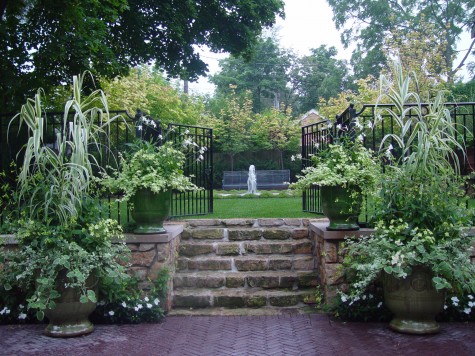 The color of these pots will always be a significant part of the planting composition. Unlike natural clay pots whose importance in the composition may be secondary or slight, the color of these pots attracts visual attention, and sets off the planting in a formal way. A green and white color scheme seems restrained and serene. Do these pots look out of their Mediterranean element? I think not. This leads me to think that before deciding a color won’t work, I should try it.
The color of these pots will always be a significant part of the planting composition. Unlike natural clay pots whose importance in the composition may be secondary or slight, the color of these pots attracts visual attention, and sets off the planting in a formal way. A green and white color scheme seems restrained and serene. Do these pots look out of their Mediterranean element? I think not. This leads me to think that before deciding a color won’t work, I should try it. This color scheme branches out a bit into the pinks and greys. The pot is elevated on a concrete base, so the foot of the pot still reads even though the ground planting has grown in. The shiny green mass of the pot is a beautiful foil for the tiny naturally green leaves of the boxwood. Monochromatic, or one color schemes are quietly formal and restful in their simplicity.
This color scheme branches out a bit into the pinks and greys. The pot is elevated on a concrete base, so the foot of the pot still reads even though the ground planting has grown in. The shiny green mass of the pot is a beautiful foil for the tiny naturally green leaves of the boxwood. Monochromatic, or one color schemes are quietly formal and restful in their simplicity.  This pot is 12 years old. Mineral deposits from the water had dulled the shine of the glaze. It is remarkable how close the color is to the color of the existing evergreens and grass. This composition is more about texture, and mass, than color.
This pot is 12 years old. Mineral deposits from the water had dulled the shine of the glaze. It is remarkable how close the color is to the color of the existing evergreens and grass. This composition is more about texture, and mass, than color.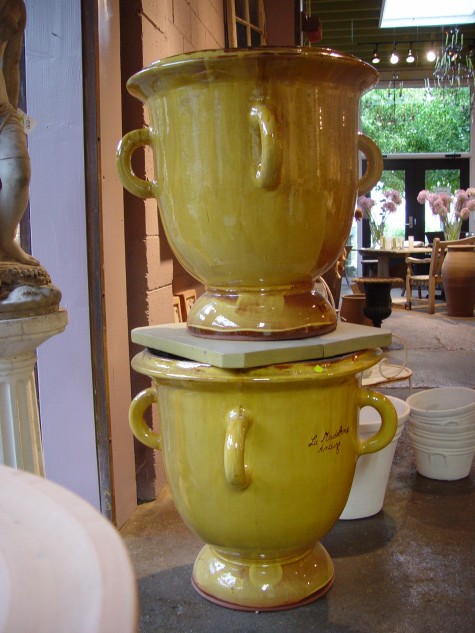 Yellow glazed French pots are perfect for places where any thing but neutral seems like a good idea. Shady gardens, or nondescript locations asking for a strong center of interest can get that from a splash of unexpected color.
Yellow glazed French pots are perfect for places where any thing but neutral seems like a good idea. Shady gardens, or nondescript locations asking for a strong center of interest can get that from a splash of unexpected color.  This pot is full of surprises; the yellow of the pot is just the beginning. A threadleaf Japanese maple makes an unusual centerpiece for the surrounding white begonias and lime licorice. The brick front porch, tough completely shaded by a second story balcony, has a fresh and striking appearance. Though delicate in color, these French pots are incredibly strong and durable. The clay of the large pots can be 3/8 of an inch thick or better, and they are high fired for extended periods of time.
This pot is full of surprises; the yellow of the pot is just the beginning. A threadleaf Japanese maple makes an unusual centerpiece for the surrounding white begonias and lime licorice. The brick front porch, tough completely shaded by a second story balcony, has a fresh and striking appearance. Though delicate in color, these French pots are incredibly strong and durable. The clay of the large pots can be 3/8 of an inch thick or better, and they are high fired for extended periods of time.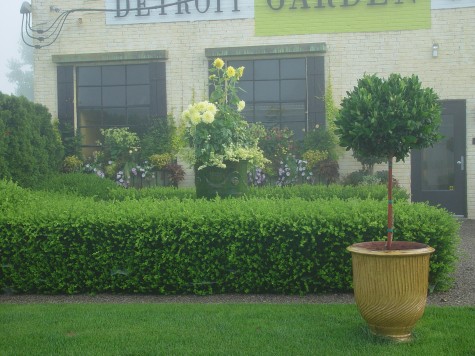 Some potteries have added more contemporary designs to their collections. This pot, known as a strie, refers to the striations formed from the pattern generated by the fingers of the potter; each pot is unique to the fingertips of the person who made it. The color of the pot helps to make it central to the entire composition of the garden. Simple color relationships read more clearly and strongly than mixed color compositions. Strong color relationships paired with more subtle color relationships is what creates rhythm in a composition.
Some potteries have added more contemporary designs to their collections. This pot, known as a strie, refers to the striations formed from the pattern generated by the fingers of the potter; each pot is unique to the fingertips of the person who made it. The color of the pot helps to make it central to the entire composition of the garden. Simple color relationships read more clearly and strongly than mixed color compositions. Strong color relationships paired with more subtle color relationships is what creates rhythm in a composition.  Blue glazed pots in the landscape can be tough to place. Though bluestone, acid washed steel, lead, water and sky all represent blue in one form or another, planting blue pots requires some thought. That glazed blue will be very influential in the look of the whole. Yellow flowers in a blue pot can look like a band uniform, or worse. Some shades of purple are deadly dull and irritating with this shade of blue; lavender and silver can be great.
Blue glazed pots in the landscape can be tough to place. Though bluestone, acid washed steel, lead, water and sky all represent blue in one form or another, planting blue pots requires some thought. That glazed blue will be very influential in the look of the whole. Yellow flowers in a blue pot can look like a band uniform, or worse. Some shades of purple are deadly dull and irritating with this shade of blue; lavender and silver can be great. 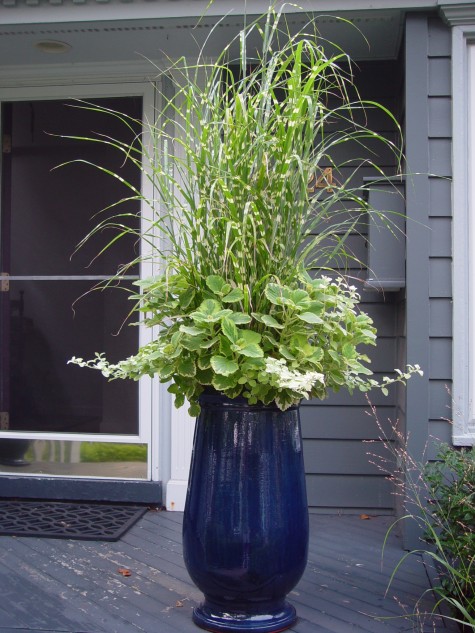
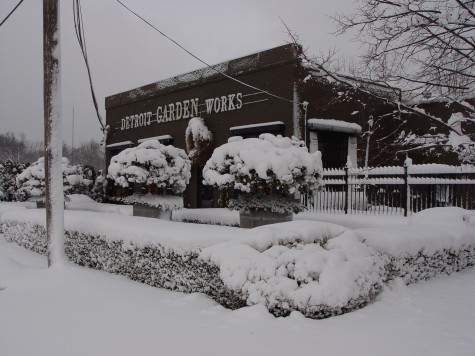
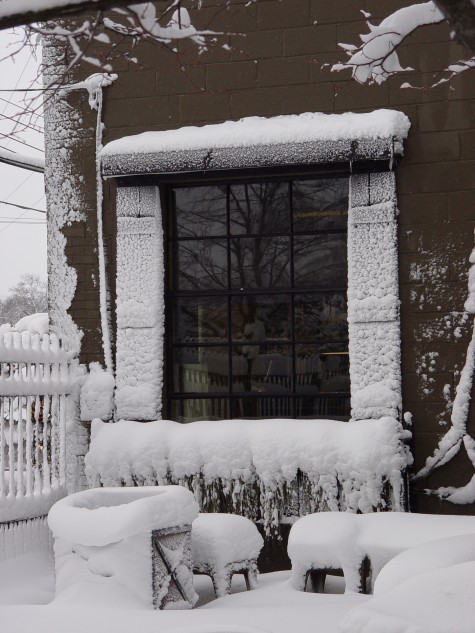 I go to work on the holidays too, as MCat lives at the store. I need to make sure he is ok; he gets pets, and holiday treats-daily attention. I have a greenhouse roof, modine heaters, and plants; any of the above could fail on any day-including a holiday. I only live 1.5 miles from work-this makes a quick trip easy. I figure I can handle any weather for that distance. But for a storm some ten years ago which had me holed up at the shop for 2 days, I am free, and lucky to be able to get to work, and just appreciate my snow.
I go to work on the holidays too, as MCat lives at the store. I need to make sure he is ok; he gets pets, and holiday treats-daily attention. I have a greenhouse roof, modine heaters, and plants; any of the above could fail on any day-including a holiday. I only live 1.5 miles from work-this makes a quick trip easy. I figure I can handle any weather for that distance. But for a storm some ten years ago which had me holed up at the shop for 2 days, I am free, and lucky to be able to get to work, and just appreciate my snow.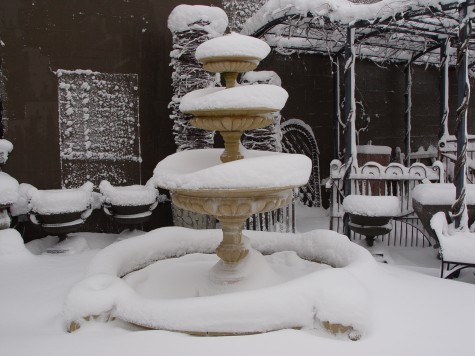 Though I am a person delighted by color, in the past few years I have become interested in Belgian design. Rob has persistently bought Belgian garden ornament; the Belgian landscape reminds him of Michigan. Long before Cote de Texas featured Belgian design (www.cotedetexas/belgian design) and Restoration Hardware got the notion to organize an entire collection with a Belgian flavor, he was out there, shopping in a country much like our midwest. Those interiors built around natural materials-the raw wood floors, linen drapes, the whitewashed antiques-the unexpected crystal chandelier-I love this understated look. This particular New Years Day looked like a Belgian day to me. The white, chocolate, taupe and cream- fresh, and not over wrought. Just how Rob would have it.
Though I am a person delighted by color, in the past few years I have become interested in Belgian design. Rob has persistently bought Belgian garden ornament; the Belgian landscape reminds him of Michigan. Long before Cote de Texas featured Belgian design (www.cotedetexas/belgian design) and Restoration Hardware got the notion to organize an entire collection with a Belgian flavor, he was out there, shopping in a country much like our midwest. Those interiors built around natural materials-the raw wood floors, linen drapes, the whitewashed antiques-the unexpected crystal chandelier-I love this understated look. This particular New Years Day looked like a Belgian day to me. The white, chocolate, taupe and cream- fresh, and not over wrought. Just how Rob would have it.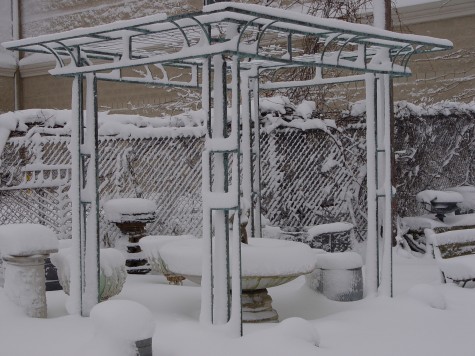 This heavy snow wiped out all the extraneous details. This copper pergola only suggested that aged copper color. Brown,white, and taupe-a limited color palette. There is such great beauty from just a few quiet details.
This heavy snow wiped out all the extraneous details. This copper pergola only suggested that aged copper color. Brown,white, and taupe-a limited color palette. There is such great beauty from just a few quiet details.  The snow added volume to what was already massive, and form to what had only been slightly suggested. The snow caught on the wall-an entire but silent discussion about surface. The irregular surface of the wall-I had never really seen this before. The snow detailed this for me.
The snow added volume to what was already massive, and form to what had only been slightly suggested. The snow caught on the wall-an entire but silent discussion about surface. The irregular surface of the wall-I had never really seen this before. The snow detailed this for me.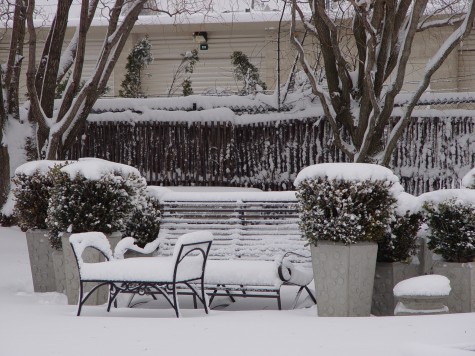 The Belgian hazelwood fence panels-if you thought you could live without them, you might reconsider. Do they not look beautiful outlined in snow? The squared boxwood planted in natural concrete pots, the black iron benches, the trunks of the willows outlined in snow, the cream metal doors on the building beyond and next door-I am thinking this looks great.
The Belgian hazelwood fence panels-if you thought you could live without them, you might reconsider. Do they not look beautiful outlined in snow? The squared boxwood planted in natural concrete pots, the black iron benches, the trunks of the willows outlined in snow, the cream metal doors on the building beyond and next door-I am thinking this looks great.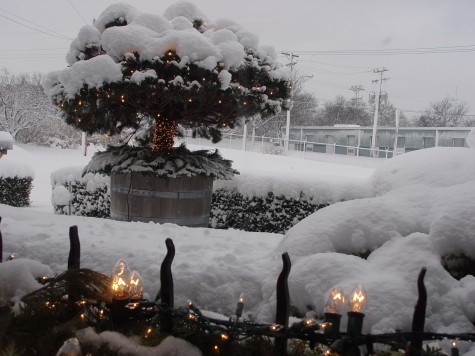 My old Scotch pines on standard, planted in these incredibly beautiful Belgian oak barrels, withstood the storm with equanimity. The white, the chocolate, and the bright light-what a gorgeous view I had out my office window. The old fashioned clear white c9 lights in the window box-my garden’s chandelier.
My old Scotch pines on standard, planted in these incredibly beautiful Belgian oak barrels, withstood the storm with equanimity. The white, the chocolate, and the bright light-what a gorgeous view I had out my office window. The old fashioned clear white c9 lights in the window box-my garden’s chandelier.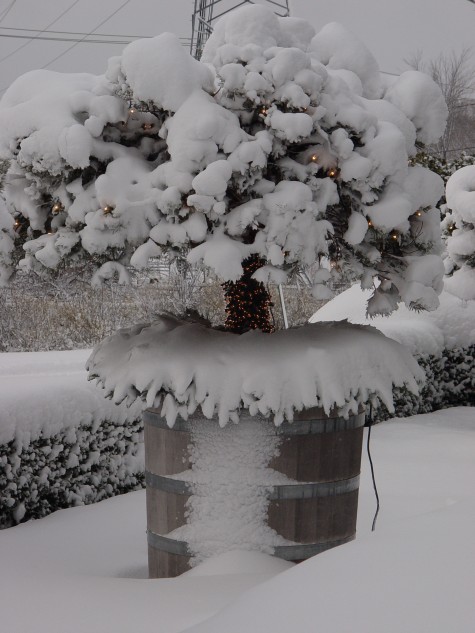 In truth, I could spend one year planning a single project-and it could never keep up with what nature whips up overnight. My 2008 New Years day-extraordinary.
In truth, I could spend one year planning a single project-and it could never keep up with what nature whips up overnight. My 2008 New Years day-extraordinary. 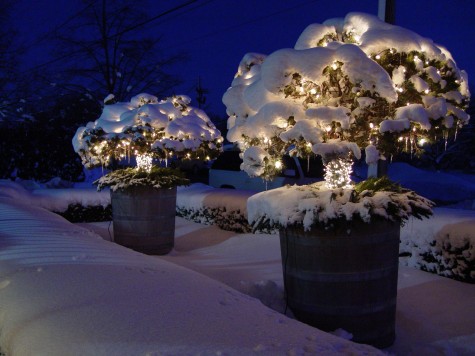
 Were I to ask you which of three wallpaper patterns appealed to you the most, or which person you have most patterned your life after, you would have no problem understanding and answering the questions. A written definition of pattern is not this easy. A paisley is a shape that is readily recognizable; a series of paisley shapes, that repeat in a certain order, that the eye can recognize, forms a pattern. My steel grate plant table tops, dusted with snow, bring the pattern of the extruded metal into focus.
Were I to ask you which of three wallpaper patterns appealed to you the most, or which person you have most patterned your life after, you would have no problem understanding and answering the questions. A written definition of pattern is not this easy. A paisley is a shape that is readily recognizable; a series of paisley shapes, that repeat in a certain order, that the eye can recognize, forms a pattern. My steel grate plant table tops, dusted with snow, bring the pattern of the extruded metal into focus.  Many patterns exist in nature; early winter may be the best time to study them. The oval shaped dried flower heads of these hydrangeas make a visual pattern that repeats. They remind me of the old boxwoods at Dunbarton oaks that are pruned to resemble clouds. Cloud pruning is a gardening term gardeners recognize; the particular shaping and direction taken by an individual gardener makes a pattern. A distinctive pattern.
Many patterns exist in nature; early winter may be the best time to study them. The oval shaped dried flower heads of these hydrangeas make a visual pattern that repeats. They remind me of the old boxwoods at Dunbarton oaks that are pruned to resemble clouds. Cloud pruning is a gardening term gardeners recognize; the particular shaping and direction taken by an individual gardener makes a pattern. A distinctive pattern. 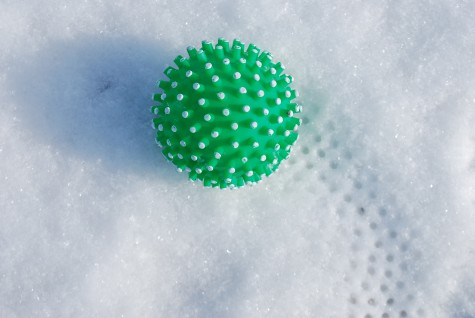 Milo has a ball decorated with raised dots in an all over pattern. An all over pattern reads the same regularly, no matter what direction your view should take. There is no left or right, no up or down. The pattern of this light snow is very subtle; every diaphanous flake randomly covers the gravel in the drive. Nonetheless, the individual flakes make a pattern-a pattern I did not really pay attention to, until I saw the imprint of the ball dots-so regular and clear. The relationship of what came from the sky, with the pattern evidenced by that manufactured ball of his-on my mind today.
Milo has a ball decorated with raised dots in an all over pattern. An all over pattern reads the same regularly, no matter what direction your view should take. There is no left or right, no up or down. The pattern of this light snow is very subtle; every diaphanous flake randomly covers the gravel in the drive. Nonetheless, the individual flakes make a pattern-a pattern I did not really pay attention to, until I saw the imprint of the ball dots-so regular and clear. The relationship of what came from the sky, with the pattern evidenced by that manufactured ball of his-on my mind today. 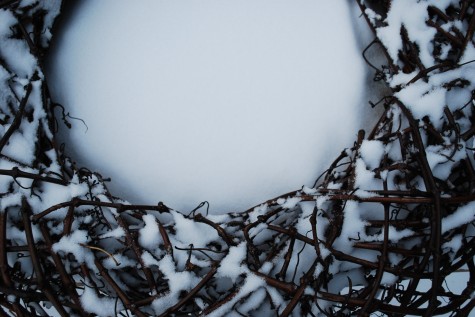
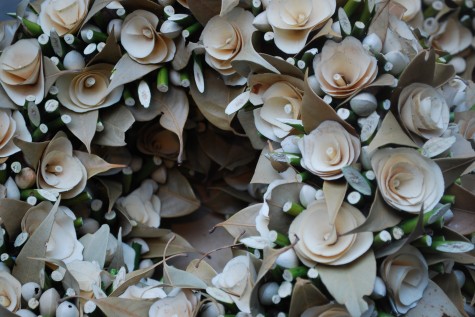 This wreath is comprised of small flower shapes constructed from wood shavings, twig stubs, and dried bay leaves. The pattern, to my eye, is all about the circle, repeating. A wreath is an ornament; the arrangement of organized shapes makes for a pattern. When I see pattern, I am at my most focused.
This wreath is comprised of small flower shapes constructed from wood shavings, twig stubs, and dried bay leaves. The pattern, to my eye, is all about the circle, repeating. A wreath is an ornament; the arrangement of organized shapes makes for a pattern. When I see pattern, I am at my most focused.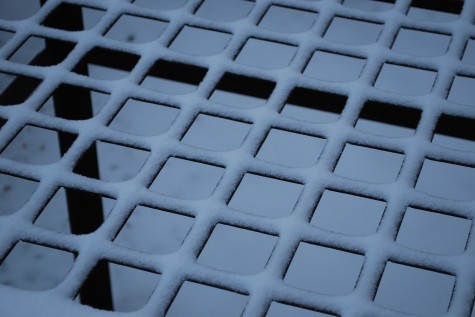
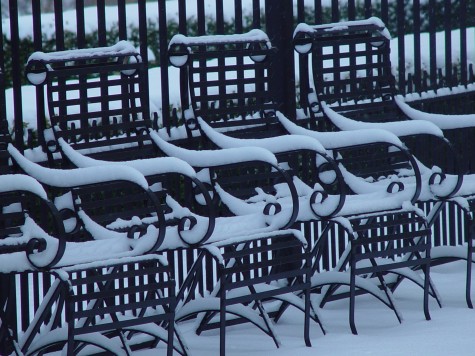 Early winter is the perfect time to think about pattern. The snow, the cold, and the low light, the absence of leaves and flowers that blur the patterns, presents me with a landscape graphically black and white. Now is the best time to see patterns. RobB just forwarded me a post from A Way to Garden (awaytogarden.com)-a doodle by Andre. His idea-to send a card to his garden. Thank you for all you have done for me, beloved garden. That post, and his card has been on my mind all day. My garden gives me so much; this quiet time gives me plenty of time to think about this. Though some years ago I was certain my gardening ended with the first killing frost-now I know different. These first early snows come with lively lessons, debate, original source material; I know to pay attention. Who knew there was so much to see, and think about in late December? I am looking, and listening. December-I welcome it. No kidding.
Early winter is the perfect time to think about pattern. The snow, the cold, and the low light, the absence of leaves and flowers that blur the patterns, presents me with a landscape graphically black and white. Now is the best time to see patterns. RobB just forwarded me a post from A Way to Garden (awaytogarden.com)-a doodle by Andre. His idea-to send a card to his garden. Thank you for all you have done for me, beloved garden. That post, and his card has been on my mind all day. My garden gives me so much; this quiet time gives me plenty of time to think about this. Though some years ago I was certain my gardening ended with the first killing frost-now I know different. These first early snows come with lively lessons, debate, original source material; I know to pay attention. Who knew there was so much to see, and think about in late December? I am looking, and listening. December-I welcome it. No kidding.